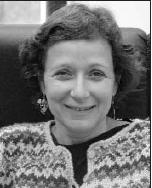UCI Students Find Hands-on Networking and Wireless Courses Particularly Engaging
|
2.11.03 - "I teach a TCP/IP networking course," says Magda El Zarki, professor of Information and Computer Science at UCI. "It's computer networking with a hands-on approach. It covers static vs. dynamic routing algorithms, the operation of TCP, IP addressing, subnetting, and so forth."
El Zarki has been teaching this class now for four years - and it's taught four times per year. She's been so delighted at the course's success that she's turning the content into a book to be published early 2004 with co-author Jorg Libeherr, a computer scientist at the University of Virginia (Computer Networking: A Hands-On Approach, published by Addison-Wesley and expected to become available winter 2004). El Zarki indicates that an early draft is running some 800 pages, with 11 chapters covering 10 experiments, and is likely to be a softcover manual with perforated pages - "for taking into the field," she says with a smile.
With the help of Chris Davison, El Zarki set up an "open lab" with routers and PCs to support class activities. They built six racks and are applying for four more to accommodate the needs of the 100 students demanding this course every quarter.
"We're providing all information and supporting a good part of course interaction on the Web," says El Zarki. "We provide an instructors manual, lecture notes for each lab, problem sets, lists of equipment, FAQs, a Web-based discussion forum, and so forth. Students post questions and can follow and contribute to threaded discussions. This Web site - four years in development! - was really the genesis of the idea of writing the book - all the content had already been created!" Consider this the modern-day mode for sharing content and distributed development of curriculum.
Because of the obvious value of this material, it's led to spin-off classes at other universities, including Purdue, San Jose State, University of Massachusetts, University of Texas, and even universities in Italy and Lebanon.
According to El Zarki, what's exciting about the class - to the students - is that they are not just doing simulations but instrumenting real experiments. Students work in groups of three or fewer students, and the class currently accommodates 50 students per quarter. Grades are based 60% on the experiments and 40% on exams.
"Students are absolutely clamoring for these kinds of practical courses," says El Zarki enthusiastically. "They say they learn more in hands-on classes and, as a result, they finally understand computer networks."
In a related course called Wireless and Mobile Networking, El Zarki asks the students to work on projects related to multi-hop ad hoc networks, inter-vehicular communications, mobile IP, wireless switches, etc. "We're buying base stations for the UCI "Ring Road" comprised of East and West Peltason streets," she says. Two are already in place, and they're hoping to gain the campus' commitment to support extending this infrastructure, which will then enable them to conduct vehicle-to-infrastructure and vehicle-to-vehicle experiments more broadly.
"It's taken a lot of work to set up these courses," says El Zarki, "but I've learned a tremendous amount." She explains that going through the process of conducting the experiments herself enables her to make the material come more alive for her students.
"Students also want to take these classes to make themselves more marketable," says El Zarki, realistically. "I hear comments like, 'Your course gave me the edge - it's exactly the job I'm doing now in industry.'"

